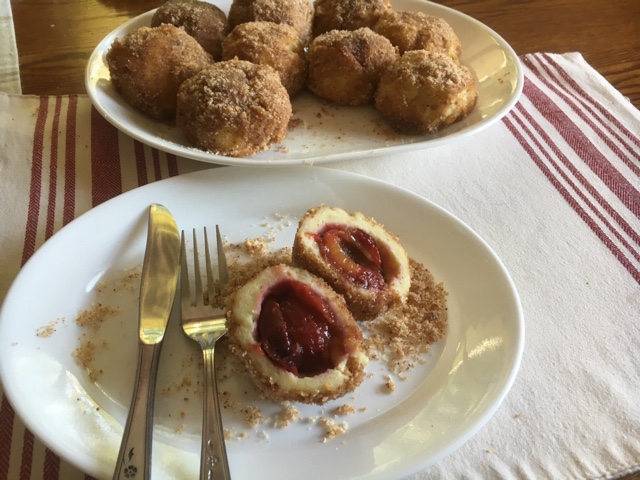I was introduced to eating bagels in New York, which is arguably the home of the world's best bagels. But I learned how to make bagels as good as the ones I had eaten in New York from an Australian friend! Being able to make my own bagels revolutionized my life, although it also made it harder to enjoy storebought alternatives many of which contain preservatives or for whatever reason simply don't taste the delicious way that bagels ought to.
Below you will find instructions for the two main kinds of bagels that I make, cinnamon raisin and onion. You can also omit those options and make plain bagels, which I also sometimes do. But the basic recipe can be adapted, adding poppy seeds, sesame seeds, or cinnamon and sugar on the tops of them, or chocolate chips inside them, or any number of other variations.
Ingredients:
8 cups high-gluten bread flour such as Baker's Roses or King Arthur (1600 g)
1 tablespoon (1 oz/25g) yeast
3 tablespoons (3 oz/75g) sugar
1 tablespoon (1 oz/25g) salt
2 eggs
2 1/2 mugs (3 1/2 cups) of warm milk
1 serving spoonful of yogurt
1/4 cup vegetable oil
For cinnamon raisin bagels add:
1 1/2 cups of raisins
2 tablespoons cinnamon
For onion bagels:
2 spoonfuls dried onion
1 beaten egg for glazing
Instructions:
Mix the warm milk and yeast together with most but not all of the flour (leave approximately a cup set aside). Add the eggs at room temperature, yogurt, salt, and sugar. Put your stand mixer on speed 1 and mix it for 6 minutes. Then warm the oil and add it little by little while the mixer is still going. The consistency of the dough should be hard like play-dough, harder than for bread. If it is not hard enough, add the remaining flour, or even more if necessary.
When the dough is shiny and not sticky any longer, divide the dough in two parts, 1/3 and 2/3 of the total amount. Place the 1/3 sized portion in a separate bowl, and leave the 2/3 sized portion in the mixer. To the 2/3 portion of dough, add the cinnamon and raisins, and keep mixing at speed 2 until they are completely incorporated. To the other 1/3 add the onion. There is no need to place it back in the mixer, although if you have a second bowl for your stand mixer you may do so. Otherwise mix it by hand until the onion is incorporated.
Cover each bowl with a damp paper towel, and let the dough rise in a warm place for an hour or until it has doubled in size. Then place it on a wooden work surface, starting with the cinnamon raisin batch, and divide it into 12 pieces of roughly equal size. Each should weigh around 8 oz (200g).
Above is a photo of the phases that the separate balls of dough go through. After separating the pieces into balls, roll them into cylinders/sticks roughly 6-7 inches in length, and then join them into rings, dipping the ends into a dish with a tiny amount of water in it, just enough to moisten them so that they adhere but not so much as to make the dough become more generally sticky. Press the ends together as shown below.
Repeat the process described above with the onion dough, which should yield six bagels. Let all the rings rise on trays dusted with flour for an hour.
After that, fill a large pot roughly 2/3 full with water. Salt the water slightly and bring it to a boil. When the water is boiling fervently, place 3 bagels at a time in the water and boil them for 5-6 minutes, stirring them around in the pot occasionally. Then remove them with a slotted spoon and return them to the trays they were on, to drain. Repeat with as many of the bagels will fit on your baking trays (in my case that is about 9 of them).
After they are drained, glaze them with beaten egg. Grease the baking trays with butter and place the bagels on them. Place them in an oven that has been preheated to 375° F (190° C) for 35 or 40 minutes. When they are done remove them and repeat the above process with the next batch, boiling, draining, glazing, and baking them as described. This entire process should be done very quickly.
The photo above shows what they look like before they have been placed in the oven, and below is a photo of them after they have been baked.
That's what the final product looks like. Once they have cooled at least a little, you can eat them with cream cheese and lox, jam, or whatever else you like to put on them. You can freeze them and defrost them when you need them and they will be as good as if they were fresh out of the oven. I recommend slicing them before freezing them - then you can defrost them in the toaster.
Let me know how yours turn out!





















































